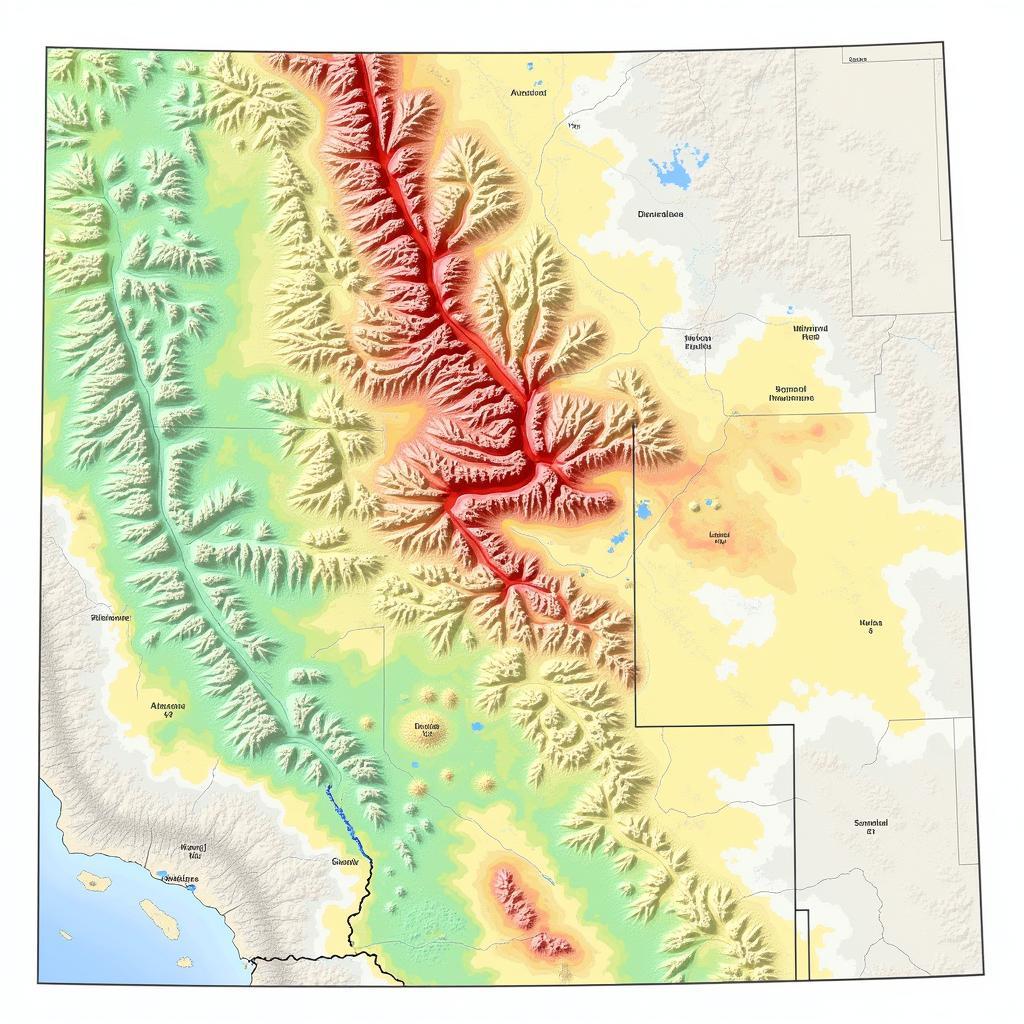Earthquakes in Colorado might not be the first thing that comes to mind when you think of the Rocky Mountains, but the Centennial State does experience seismic activity. While not as frequent or intense as in California or Alaska, understanding the potential for earthquakes in Colorado is crucial for residents and visitors alike.
Understanding Earthquake Activity in Colorado
Colorado’s earthquake activity is primarily due to its complex geological structure. The state is crisscrossed by fault lines, some active and others ancient, which can shift and cause tremors. While most of these earthquakes are minor, Colorado has experienced a few significant seismic events in its history. The largest recorded earthquake in Colorado occurred in 1882, estimated at a magnitude of 6.6. More recently, induced seismicity, or earthquakes linked to human activities like wastewater disposal from oil and gas operations, has become a topic of concern and study. These induced earthquakes have raised questions about the relationship between industrial practices and seismic activity in the state.
 Colorado Earthquake Fault Lines Map
Colorado Earthquake Fault Lines Map
Why are there earthquakes in Colorado?
The primary reason for earthquakes in Colorado is the presence of fault lines. These fractures in the Earth’s crust are the result of tectonic plate movement over millions of years. The Rocky Mountains themselves are a testament to this powerful force. As these plates continue to shift, stress builds up along these fault lines. When this stress exceeds the strength of the surrounding rock, it is released suddenly, causing an earthquake.
Are there other factors contributing to seismic activity? Yes, human activities, particularly wastewater disposal associated with oil and gas extraction, have been linked to increased earthquake frequency in some areas of Colorado. This process involves injecting large volumes of wastewater deep underground, which can alter pressure along existing fault lines and trigger earthquakes. Understanding the interplay of natural and human-induced seismicity is vital for mitigating earthquake risk in Colorado. For more information about fault lines, you might find our article about what color is earth interesting.
How often do earthquakes occur in Colorado?
While Colorado experiences earthquakes less frequently than some other states, they are not uncommon. Hundreds of small earthquakes, often too weak to be felt, are recorded each year by the United States Geological Survey (USGS). Larger, more noticeable earthquakes are less frequent, occurring every few years to decades. The frequency and magnitude of earthquakes in Colorado can vary depending on the region and the influence of human activities.
Preparing for an Earthquake in Colorado
Even though large earthquakes are relatively rare in Colorado, being prepared is essential. Developing an emergency plan, securing heavy furniture, and having an emergency supply kit are crucial steps. Knowing what to do during an earthquake, such as “Drop, Cover, and Hold On,” can significantly increase your chances of staying safe. Regularly practicing earthquake drills can help ensure that everyone in your household knows how to react in the event of an earthquake. Much like preparing for any natural disaster, having a plan can provide peace of mind and increase your resilience. Similar to the concept of no-fault states, which you can read about in our article is colorado a no fault state, being prepared is always a good strategy.
Earthquake Resources and Information in Colorado
Numerous resources are available to help Colorado residents learn more about earthquakes and how to prepare. The USGS provides detailed information on earthquake activity in the state, including maps, data, and safety tips. The Colorado Geological Survey also offers valuable resources on the state’s geology and earthquake hazards. Local emergency management agencies can provide specific guidance for your community.
Conclusion
While Colorado may not be known for its earthquakes, they are a reality for residents. By understanding the causes, frequency, and potential impacts of earthquakes, and by taking appropriate preparedness measures, individuals and communities can minimize risks and enhance their resilience to these natural events. Staying informed and prepared is the best way to navigate the potential challenges posed by earthquakes in Colorado. For more specific information about earthquakes in Colorado, see our article does colorado have earthquakes.
FAQ
- What was the largest earthquake ever recorded in Colorado? The largest recorded earthquake in Colorado was in 1882, estimated at a magnitude of 6.6.
- Are earthquakes becoming more frequent in Colorado? Some areas have seen an increase in earthquake frequency, potentially linked to wastewater disposal.
- What should I do during an earthquake? Drop, Cover, and Hold On.
- Where can I find more information about earthquakes in Colorado? The USGS and the Colorado Geological Survey are excellent resources.
- Are there any building codes related to earthquake safety in Colorado? Yes, building codes in certain areas address seismic design considerations.
- How can I prepare for an earthquake? Create an emergency plan, secure heavy furniture, and have an emergency kit.
- What is induced seismicity? Earthquakes triggered by human activities, such as wastewater disposal.
For assistance, please contact us at Phone Number: 0373298888, Email: [email protected] Or visit us at: 86 Cau Giay, Hanoi. We have a 24/7 customer service team.

